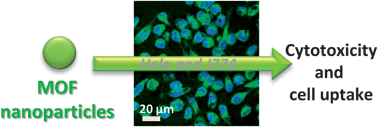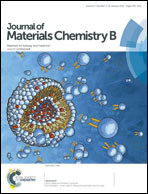Cytotoxicity of nanoscaled metal–organic frameworks†
Abstract
A series of fourteen porous Metal–Organic Frameworks (MOFs) with different compositions (Fe, Zn, and Zr; carboxylates or imidazolates) and structures have been successfully synthesised at the nanoscale and fully characterised by XRPD, FTIR, TGA, N2 porosimetry, TEM, DLS and ζ-potential. Their toxicological assessment was performed using two different cell lines: human epithelial cells from foetal cervical carcinoma (HeLa) and murine macrophage cell line (J774). It appears that MOF nanoparticles (NPs) exhibit low cytotoxicity, comparable to those of other commercialised nanoparticulate systems, the less toxic being the Fe carboxylate and the more toxic being the zinc imidazolate NPs. The cytotoxicity values, higher in J774 cells than in HeLa cells, are mainly function of their composition and cell internalisation capacity. Finally, cell uptake of one of the most relevant Fe-MOF-NPs for drug vectorisation has been investigated by confocal microscopy studies, and indicates a faster kinetics of cell penetration within J774 compared to HeLa cells.


 Please wait while we load your content...
Please wait while we load your content...